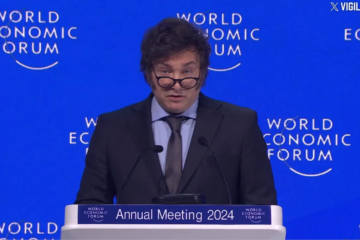Key FinTech Trends of 2017-2018 That Will Continue Well Into 2020

- AI first” principle. In the recent past, the key principle of all Fintech products was “Mobile First”. All products were designed to be user-friendly on mobile devices. By contrast, all new products and even backend solutions now are designed to be able to benefit from Artificial Intelligence inputs. If it’s not optimized for AI, it’s outdated. AI is especially big in asset management and fraud management, because this is where we need to process lots and lots of data to find the optimal decision.
- Videos are replacing traditional manuals, instructions, newsletters and even some parts of terms and conditions. This has to do with the reduction of the average attention span, generational change and sheer entertainment value of visual content vs walls of text.
- People don’t go to bank branches as often: some data indicated that with one particular bank an average customer spent only 2 hours per annum in a branch versus 40 hours online. Why do we keep all the branches?
- Money and money management is still one of the biggest stress factors for people. So, it’s almost as hard for banks to be loved as it is for dentists or divorce lawyers.
- Regulations in different countries from different continents are slowly converging: many Fintech startups attested that expectations of various regulators have become more and more similar. At the same time, regulators in Africa appear to remain quite difficult and slow.
- India is gaining momentum and producing more and more brilliant business models in Fintech. Their demonetization might not achieved all its original goals, but it actually helped Fintech acceleration.
- Selling products and services to banks is incredibly difficult and often takes a very long time, between 1 and 2 years. The best strategy to “get in” is to find an insider/internal sponsor, call them up every week, prepare for them all the presentations, business cases, budgets and any other documents they may need to present your project internally.
- Crypto is growing. Users of popular trading platforms (Oanda, EToro, Plus500) have traditionally purchased shares of Tech companies. AMZN, Apple, GOOGLE were their most popular choices. Now, these users have shifted to buying crypto-currencies. Younger generation does not care so much about the risks of bitcoins.
- Many virtual banks (Monzo, Revolut & Co) remain unprofitable, they still invest into customer acquisition strategies and subsidize processing and transactional costs of their users.
- There are too many e-wallets: from Starbucks and gift cards of large online retailers to growing local remittances (Venmo, Lydia, Twint) to PayPal and ApplePay and SamsungPay and others. It’s likely that consolidation will happen. We should expect a consolidation in consumer-facing payments apps and wallets. There are just too many of them now and nobody wants that. Soon.
- Plastic cards business is changing. People use less credit and more debit cards. The volumes of debit cards are growing, partially thanks to replacement of cash. Some people are tired of plastic cards altogether. At least Jack Dorsey, the CEO of Square, can’t wait to see it happening. Cashless is growing. But even in Germany cash is still somewhere around 70% of consumer transactions volumes. It’s a long way to go.
- There are still plenty of geographic and technological and legal barriers for smooth circulation of money. Will Gaybrick, CFO of Stripe, talked about money velocity and how important it is to eliminate inefficiencies.
- Authentication and KYC must be further automated and simplified. “For consumers, ideal authentication process is nothing” says Philippe Vallée, CEO of Gemalto.
- Stripe, Alipay, Samsung Pay and many other checkout and merchants-focused providers are adding new analytical, marketing and reporting features to their platforms. Simply processing payments is not enough.
- In terms of Banks vs Fintech – where are we now and who is winning at what?
Fintechs are taking over and traditional banks are losing (or never really had):
– remittances;
– crowdfunding;
– P2P lending;
– consumer lending and associated credit scoring; and
– some merchants acquiring and e-commerce services.
On the other hand, traditional banks are keeping:
– corporate finance services;
– treasury functions;
– lion portion of wealth management; and
– mortgages.
Which is still a lot.
- My best quote about regulations and innovations comes from Sopnendu Mohanty, the Chief FinTech Officer at Monetary Authority of Singapore. He was talking at Money2020 about the fact that many regulators create sandboxes with hundreds of companies playing there with no tangible outcome. It’s practically impossible to scale out of the sandbox. “Do not manage innovation as exception. We want to build a system where innovation is a natural outcome.” I loved it. Indeed, innovations and new business models should be the new norm, not an exception.

 DO NOT RELY ON THE STATE TO PROVIDE PROSPERITY OR STABILITY. WHEN SOMEONE BLAMES MARKET INEFFICIENCY AND ASKS FOR MORE REGULATION,
DO NOT RELY ON THE STATE TO PROVIDE PROSPERITY OR STABILITY. WHEN SOMEONE BLAMES MARKET INEFFICIENCY AND ASKS FOR MORE REGULATION,